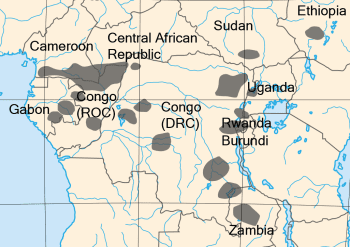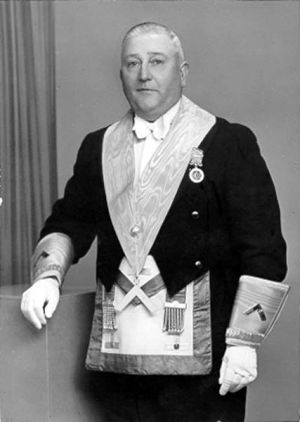|
|
Post by anansi on Jul 24, 2014 7:33:53 GMT -5
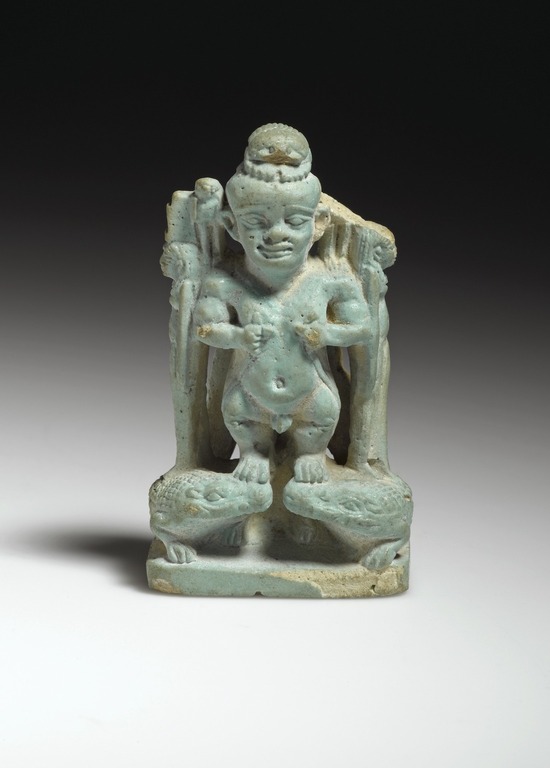 Figure of Pataikos Figure of Pataikos
Very high-quality and expensive faience amulets were made in all periods. In this amulet, the dwarf god Pataikos strangles snakes while standing on two crocodiles. A scarab, a beetle associated with the sun god, rests on his head. He is flanked by Isis and Nephthys, the wife and sister of Osiris. The back of the amulet is a ba-bird, part of the soul of the deceased. This amulet, worn with a cord around the neck, protects the deceased from snakes and crocodiles in the afterlife. Pataikos has connections to the dwarf god Bes and to the god Horus the child, who also stands on crocodiles. But he seems to be a separate entity.www.brooklynmuseum.org/opencollection/objects/4115/Figure_of_PataikosPtah lord and of Memphis it was from his name Egypt was derived,as Hwt-ka-Ptah (home of the ka (soul) of Ptah) transliterated as Aígyptos by the later Greeks,what's interesting is his apparent connection to the Great lakes region 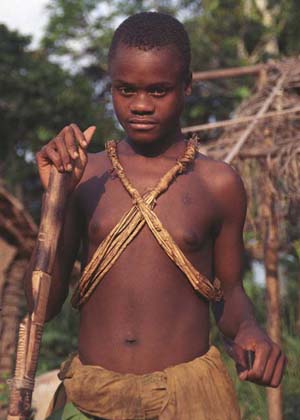  Note the X running across the chest of both,also of interest is the fact that the this ethnic group still goes by the name Akka or Bakka pural while the ancient Kemities regards them as belonging to the world of the ancestral spirits.
 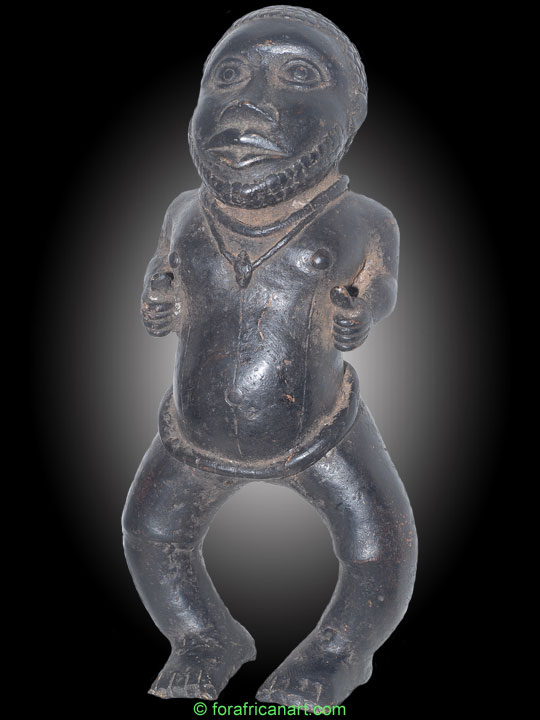 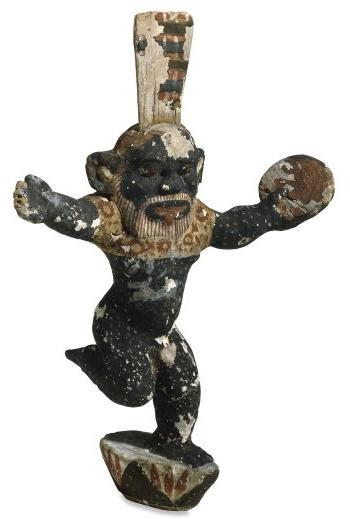  Greek Saytr or Pan aka Bes aka Bacchus Greek Saytr or Pan aka Bes aka Bacchus
Pepi II inscription from a trade mission to the Great Lakes area one of the nurseries of what was to became Nile Valley civilization
Bes was among the foremost and widely known Batwai Gods he having undergone changes and transformation in places as far flung from Nigeria to the northern Mediterranean Greece,Etruria,Rome. Bes is associated with procreation,war and merriment although he is generally naked he at times dons a leopard skinned cloak' |
|
|
|
Post by MorolongDithabeng on Jul 27, 2014 13:29:44 GMT -5
 "The oldest known fossil remains, according to Dr. Louis Leakey, were found in the Olduvai Gorge region in Kenya, Uganda and Tanzania. These first "small" people were known as the "Twa", who worshipped the God Bes, a primitive human form of Horus I, being the earliest form of Ptah the God of Gods. The Twa, are modern humans or Homo sapiens sapiens. They are a diminutive Africoid people residing in the rain forests of Central Africa. " Interesting facts, in Southern Africa we have the San, a name they say was given to them by the Khoi khoi. They identify themselves as the 'AbaThwa', a name also used by the Zulu-Bantu when referring to them, in Setswana-Bantu they are called 'BaRwa' as they are famous for their short stature. In most Bantu languages the 'Th' and 'R' are used interchangeably. In ancient Malawian myths and tales, the Abathwa (pygmy) oral stories spoke of them being spread throughout Africa...We can safely say that 'Twa' 'Rwa' 'Thwa' is how the Bantu referred to someone with a short stature or perhaps to the way they spoke. agnesmizere80.wordpress.com/2014/03/10/of-ancient-malawis-abathwa-pygmies-and-langwani-giants/ The "BaTwa and their worship of Bes" is not in isolation, we have the San Bushmen (AbaThwa) who say that a sacred praying mantis gave them words and fire . They revered the mantis and are even said to worship the insect. Southern African indigenous mythology refers to the mantis as a god in Khoi and San traditional myths and practices, and the word for the mantis in Afrikaans is hottentotsgot (literally, god of the Khoi-San). The word "Mantis" is also the Greek word for "prophet or seer" The Setswana-Bantu word for mantis is 'Mmaseletswana' literally meaning "She with the small axe". The 'mma' is a feminine prefix, 'seletswana' is the adjective of 'Selepe' meaning Axe   The three symbols seen below show the visual depictions of the Ancient Egyptian's symbols which portray God as an axe. The first symbol is a depiction of a staff bound with a cloth, thus expressing the concept of a flag as given by Sir Alan Gardiner. The third symbol is a flail, an agricultural implement which uses force just as an axe is used for carving or cutting. I will discuss the 2nd symbol in detail later on as it also includes astrology Attachments:
|
|
|
|
Post by anansi on Jul 28, 2014 7:09:19 GMT -5
Interesting I love how all this is coming together along with Dna evidence. looking fwd to seeing more stuff from you,the key to understanding Kemet is not towards the Mediterranean but deep to inner Africa there is a book 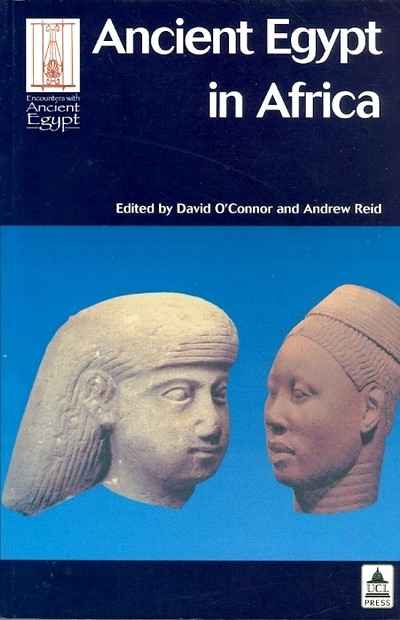 Unfortunately I loan it out and have been unable to recover it again,but it is in line with much of what you posted here and elsewhere. |
|
|
|
Post by MorolongDithabeng on Jul 28, 2014 8:42:00 GMT -5
Thank You for discovering a link that I was unable to find, now I can advance other links on the use of the cross the X and the Axe. I source my material including very old books from our local Ditsong Cutural Museum www.ditsong.org.za/culturalhistory.htm. They will be able to source it from other affiliate libraries if not available on their records. The mythical spirits of the short people with protruding bellies and armed with axes in myths are believed to still guard a sacred entrance to the mythical kingdom and ask the dreaded question, “Mwandionera pati.” (“From where did you see me?”)https://en.wikipedia.org/wiki/User:Bvdweide "There were three types of cross that Africans used for healing, there was the T-shaped cross known in Western mysticism as the tau cross, then there was the proper cross of the kind we are told Jesus was crucified upon. A cross with a long stem and short arms. Then there was the unsaid cross, known to white people as the Ankh, which many western thinkers wrongly assume to have been only known to the ancient Egyptians. This ankh was actually known by our people as the knot of eternity, or the knot of eternal life, and it was used even by Khoi-San people, for purposes of healing. www.bibliotecapleyades.net/esp_credo_mutwa04.htmThe X-shaped cross in African mythology is used for protection and attack. It is usually created using white material like beads also rendered using white, silver black or gold material. Traditional healers in Malawi usually draw the cross on the ground with ufa woyera (maize flour) to represent the 4 winds of Sapitwa as in north, south, west and east. Is this a typical example of foreigners who fumbled their way into explaining a people's religious and cultural beliefs? The axe does not necessarily refer to a tool per se but its the rendering of form through use of material.    |
|
|
|
Post by MorolongDithabeng on Jul 29, 2014 6:52:52 GMT -5
The problem with dealing with a people obsessed with being the first at discovering things is that they ignore or hide anything that proves them otherwise. DNA has proved more than a thousand times over that Kemet is an African construct but our children are still made to think 'Newton' is the man. If you come into my house and I show you the Bedroom, Dining room, Kitchen and other rooms, as a guest you have no power to change the order of my house. The only thing you can resort to is a hostile takeover which will leave the house a mess because it was never designed for e.g to have a mattress in the bathroom. The Greeks and Romans did, now that is what characterizes Afrocentrism hence it is ignored and played. If indeed we built that place in the North, the skill to construct another one on top is within us, we have the architectural plan to extend this house using the current as a foundation/platform so to establish our order. DNA proof together with material and non-material cultural proof forms a formidable wave. The order of the North fell into the hands of foreigners who were unable to run it cause they were not its architects, foreign invasion was the demise of that place... Because of lack of understanding, things like the 101 key fell into their hands and it seems is being abused hence my initial lament "Allow Kemet to correct her error"    |
|
|
|
Post by MorolongDithabeng on Jul 29, 2014 9:51:26 GMT -5
If you raise the S.A 200 banknote against a light source you see a man + leopard = "3rd eye" which = spiritual leadership in African mythology. The same impression is given through use of graphics on the 1 USD note by the showing of light rays behind the eye. It is called the 'Eye of the Spirit'. In ancient Egypt the opening of the mouth ceremony was performed by one such individual. (This is explained in detail in the upcoming Morolong Maropeng publication) The Book of the Dead contains a spell for this process, it reads: My mouth is opened by Ptah, My mouth's bonds are loosed by my city-god. He looses the bonds of Seth from my mouth. My mouth is given to me, My mouth is opened by Ptah, With which he opened the mouth of the gods. Psalm 51 written by David has the following parallels: Thou shalt wash me, and I shall be whiter than snow, Thou shalt open my lips, O Lord: and my mouth shall shew Thy praise.  Nelson Mandela had his genetic code analysed in 2004, with some surprising results. While he is Xhosa, his mitochondrial DNA shows that he can trace his maternal lineage back to the San Bushmen (BaTwa), the earliest inhabitants of Africa. Mitochondrial DNA is only passed from mother to child and undergoes no genetic mixing, so it's one of the more common ways to test genetic ancestry. Mandela's paternal line, on the other hand, was traced to a group of Africans from the Great Lakes area of East Africa. Most of SA's African population originated from this region and migrated down the continent's east coast to settle in South Africa. www.southafrica.info/mandela/origins-centre-150306.htmThe image below is the image of the President of South Africa Jacob Zuma together with King Goodwill Zwelithini Zulu who according to tribal hierarchy is King of all Zulu(Nguni) people. He hold in his hand a token of his status amongst the nations. The red feathers of defense and offense, the leopard skin to signify spiritual level and the axe ("flag") show status as the representative of the invisible order above to pass judgement below   |
|
|
|
Post by anansi on Jul 29, 2014 12:05:33 GMT -5
 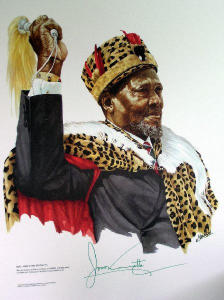 One thing though I'have always likened the Crook and Frail as a stylized staff and fly's whisk rather than an ax,like all proper cattle keeping chieftain and kings carry around as a sign of their office as the good Shepard, protectors of their sacred herd, IE their nation. |
|
|
|
Post by MorolongDithabeng on Jul 29, 2014 15:59:28 GMT -5
|
|
|
|
Post by MorolongDithabeng on Jul 29, 2014 16:49:37 GMT -5
The link between the X formation and the physical axe is that both refer to star constellation. There's an open and closed (X) forms of the crook and flail which bears different meaning respectively.   The use of a wreath around the Chi-Rho symbolizes the victory of the Resurrection over death, and is an early visual representation of the connection between the Crucifixion of Jesus and his triumphal resurrection, as seen in the 4th century sarcophagus of Domitilla in Rome.  |
|
|
|
Post by anansi on Jul 29, 2014 23:12:52 GMT -5
The link between the X formation and the physical axe is that both refer to star constellation. There's an open and closed (X) forms of the crook and flail which bears different meaning respectively. The use of a wreath around the Chi-Rho symbolizes the victory of the Resurrection over death, and is an early visual representation of the connection between the Crucifixion of Jesus and his triumphal resurrection, as seen in the 4th century sarcophagus of Domitilla in Rome. 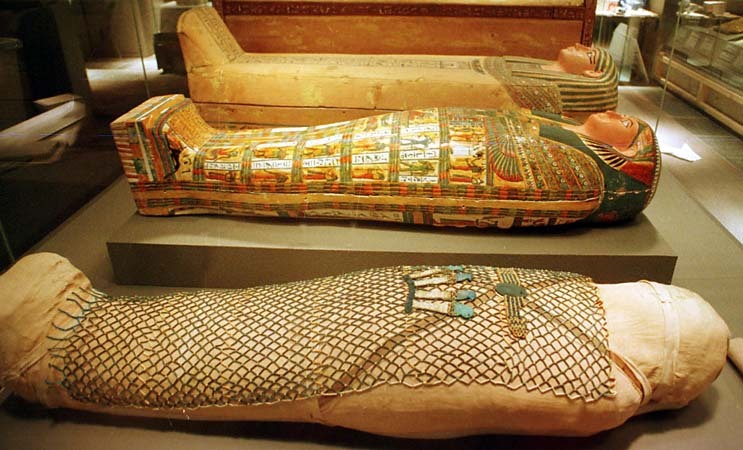 Well yes I can see that the practice of crossing the arms across the chest in modern burials in the west got it's ultimate origins though I doubt most who follow the custom understand why. |
|
|
|
Post by MorolongDithabeng on Aug 3, 2014 9:39:26 GMT -5
Well yes I can see that the practice of crossing the arms across the chest in modern burials in the west got it's ultimate origins though I doubt most who follow the custom understand why. The United Kingdom flag is a union of the following crosses   The Flag of Scotland is also known as Saint Andrew's Cross or the Saltire. According to legend, the Christian apostle and martyr Saint Andrew, the patron saint of Scotland, was crucified on an X-shaped cross at Patras, in Achaea. Supposedly, a miraculous white cross appeared in the blue sky and Óengus' troops were roused to victory by the omen. The flag of England is also known as Saint George's Cross (or the Cross of St George) is a red +shaped cross on a white background, associated with Saint George since the time of the crusades. Saint Patrick's Cross or the red saltire (X-shaped cross) on a white field, is used to represent the island of Ireland or Saint Patrick, the patron saint of Ireland. Attachments:
|
|
|
|
Post by MorolongDithabeng on Aug 3, 2014 11:45:06 GMT -5
|
|
|
|
Post by anansi on Aug 3, 2014 12:01:09 GMT -5
 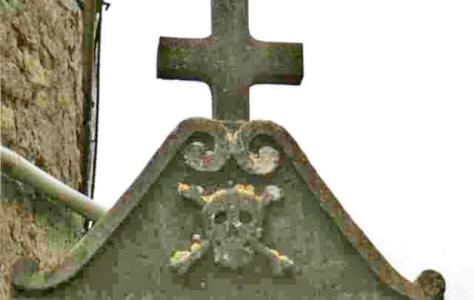 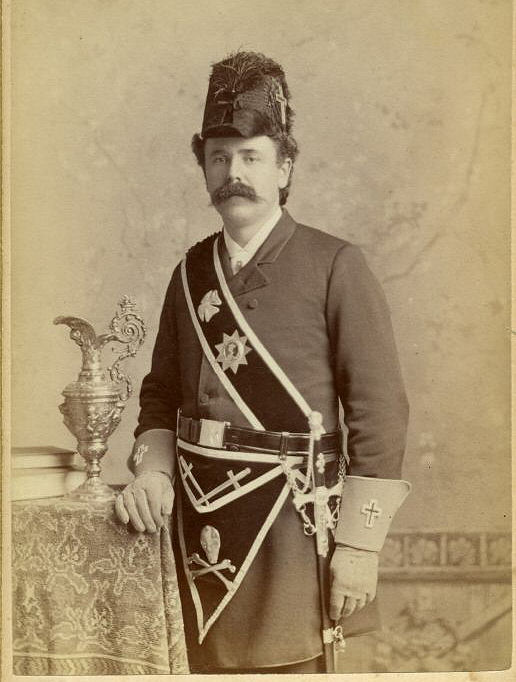 And interestingly we have the Jolly Rogers traditional pirate's flag a brotherhood,a scull and bones on a Templar church and a Freemason apron.  Note what God Bes around his neck.  as with Nigerian Bes  Congolese Bes,however there are important differences between the Skull and cross bones and the God Bes,as his is not a human skull but that of a leopard?? and the cross bones are missing in this case,but given the other symbolic icons above with clear connections with Kemet there may well spring from the same tradition. |
|
|
|
Post by MorolongDithabeng on Aug 4, 2014 12:12:19 GMT -5
|
|
|
|
Post by anansi on Aug 5, 2014 3:27:39 GMT -5
Oh yes indeed I see it, I wonder if they know of it's almost universal usage in Africa outside of Kemet and Kush,my feeling on this is yes! for whatever else they maybe they ain't stupid,and they do travel,man such is the awesome power of African symbolism.
|
|

